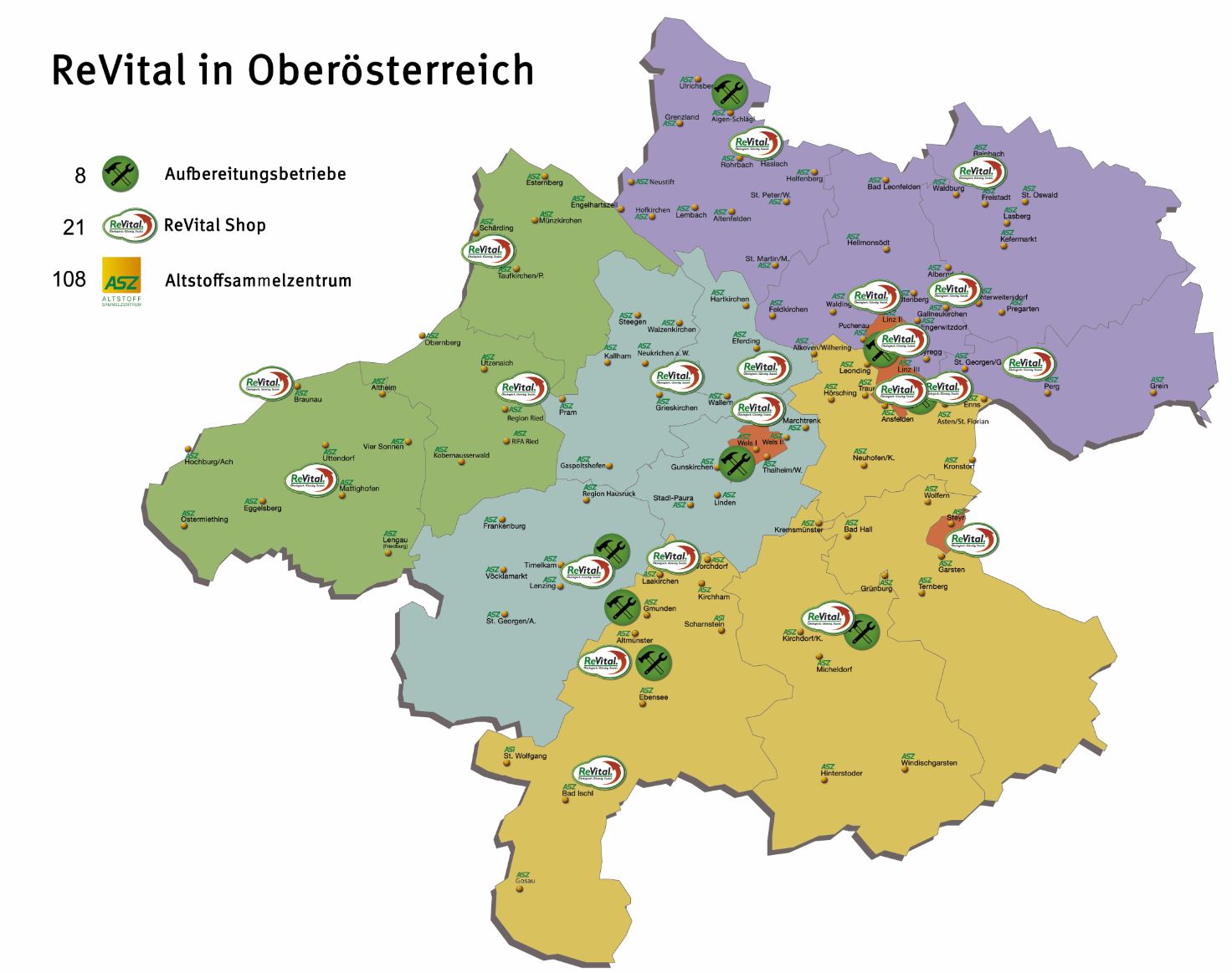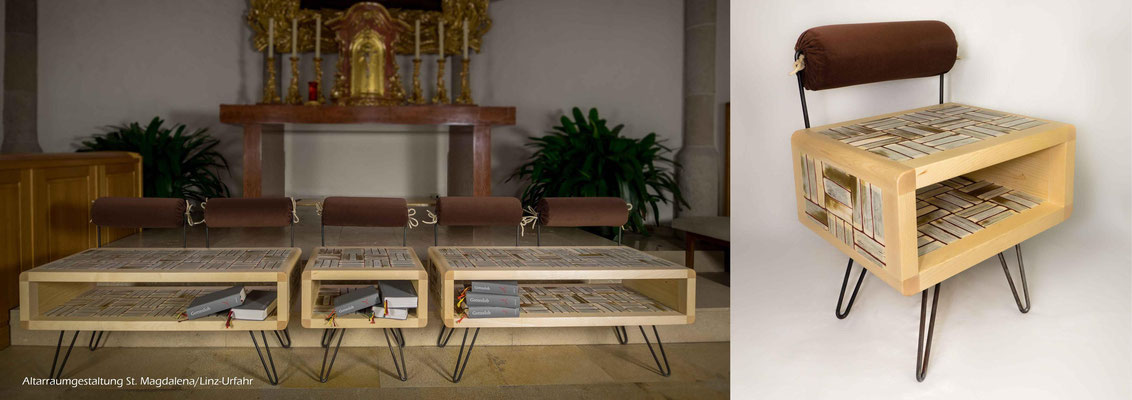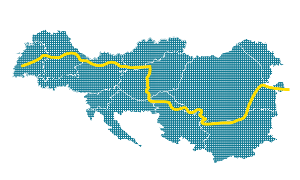Material Loops, Thinking in Cycles!
In the traditional, linear economy, products are usually incinerated or disposed after use. As a result, the resources and materials in these products are lost. The circular economy, on the other hand, aims to close material cycles to material loops - even at the product development stage. Products are needed that can be easily reused, shared, repaired and recycled in an environmentally friendly manner. For example, coffee can be turned into ballpoint pens and old fabric into new bags. The recycling of used goods is a trend: it conserves resources in the long term and helps to avoid waste.
At the kick-off event of the “Plattform Kreislaufwirtschaft” in Vienna, there was intense discussion about what the EU goals in this area mean at national level. Waste must be avoided through increased recycling and reuse. This also includes clever product design, choice of materials, reparability, extension of service life and keeping materials in closed loops. The EU and therefore all its member states need a high-tech recycling economy. And this requires machines and plants that can handle material flows, especially from the post-consumer sector. After all, pure recycling is a major challenge. For the manufacturers of such machines, however, this represents an extremely attractive opportunity.
Main problem: Without any financial advantage, the circular economy will only become established very slowly in industry. Plastics are already in the crossfire, other materials and products will follow. The construction sector in particular is coming into focus due to the high consumption of resources. However, before a rethink takes place, it must become clear to the companies that circular economy pays off, on the one hand through cost savings and on the other - and this is even more important - through long-term growth, which is promoted by new business models and new customers.
The new brochure "Your trash is my treasure", developed in the Interreg project MOVECO, shows how this works. Each partner country selected an inspiring product or business idea that could serve as a model for a sustainable economy. As an Austrian contribution, the reVital shops of the Upper Austrian Provincial Waste Association were selected, in which discarded products such as furniture can be handed in for repair and resale. The declared objectives of ReVital is the prevention of waste, the provision of cheap shopping for high-quality second-hand goods and the creation of jobs in the region. Collection points for well-preserved housewares, furniture, electrical, sports and leisure equipment are the waste collection centers. A direct delivery in the shop is possible or if necessary, the goods are picked up.

© ReVital: Map of ReVital shops in Austria
You need another example for how to reuse old materials in a new creative way? Existing "old materials" are creatively examined as "new materials" and re-processed. For example, the "old material book" is cut into slices of the same format, glued to a base plate in the repeat, cast and sanded off. This is how books become furniture! Done is this by the society “Kunst vom Rand” creating concepts for the valorisation of periodically accruing waste material through innovative redesign.

© Kunst vom Rand: Design of a chancel
These concepts should point out new possibilities in the utilization of the obsolete. They attach great importance to the simple processing of socially relevant old materials into unique new materials. In remanufacturing concepts, the existing material is analysed according to articles, quantities, sizes, availability etc. and a sensible remanufacturing concept is developed on the basis of this information. Machining possibilities, exemplary production steps, technical production problems are determined. The chairman Mr. Josef-Michael Pfeiffer defines his work like this: “Everyone is equally involved in the overall concept according to his or her feelings, experiences and talents. The creative inhalation and exhalation in different rhythms. It is not a matter of searching but of finding. The found inspires, ideas meet, complement each other and merge. This promotes the creativity of all those involved. It is also essential to uncover hidden talents and enjoy working together.”
To close the “example loop”, here are three more examples of sustainable products working with closed material loops:
The “Umweltforum Starterbatterien” organizes the collection and disposal of vehicle batteries accumulating in Austria (lead-acid batteries) and thus makes a significant contribution to the high overall rate of return of vehicle batteries in Austria. Founding member Banner Batteries in this way recycles 100% of its batteries.
A general overhaul from Rosenbauer quickly updates even fire-fighting vehicles already on the road for decades with the latest technology. Municipal and initial attack vehicles as well as industrial and air crash tenders can be fitted with the latest fire-fighting equipment. Even individualized suggestions for modernization are possible. All installed modules come from the latest product lines and reflect the best quality.
As the world market leader in stamp products, Trodat sees itself as having a special obligation and has been setting a good example for climate protection for years. Already in 1993, when the Kyoto Protocol was not on everyone's lips yet and the strict Austrian environmental laws were not yet up to date, Trodat set measures for a better use of energy. Approximately 80% of all production waste is recycled, 100% recycling of mechanically unclaimed parts. The original Printy 4.0 is much smaller, lighter than its predecessor and consists of up to 65% * recycled plastic. This saves up to 49% * CO2 .
We predict the circular revolution to be unstoppable. One million tons of recycled plastics means 28 million tons less carbon dioxide, which corresponds to one million fewer vehicles on the roads. But mobility is not the only scapegoat, because over 67% of greenhouse gases originate from the industrial handling of materials. According to the Ellen MacArthur Foundation by implementing the circular economy compared to the existing linear model up to 40 % of greenhouse gases will be saved. So why waiting, lets start doing it!

